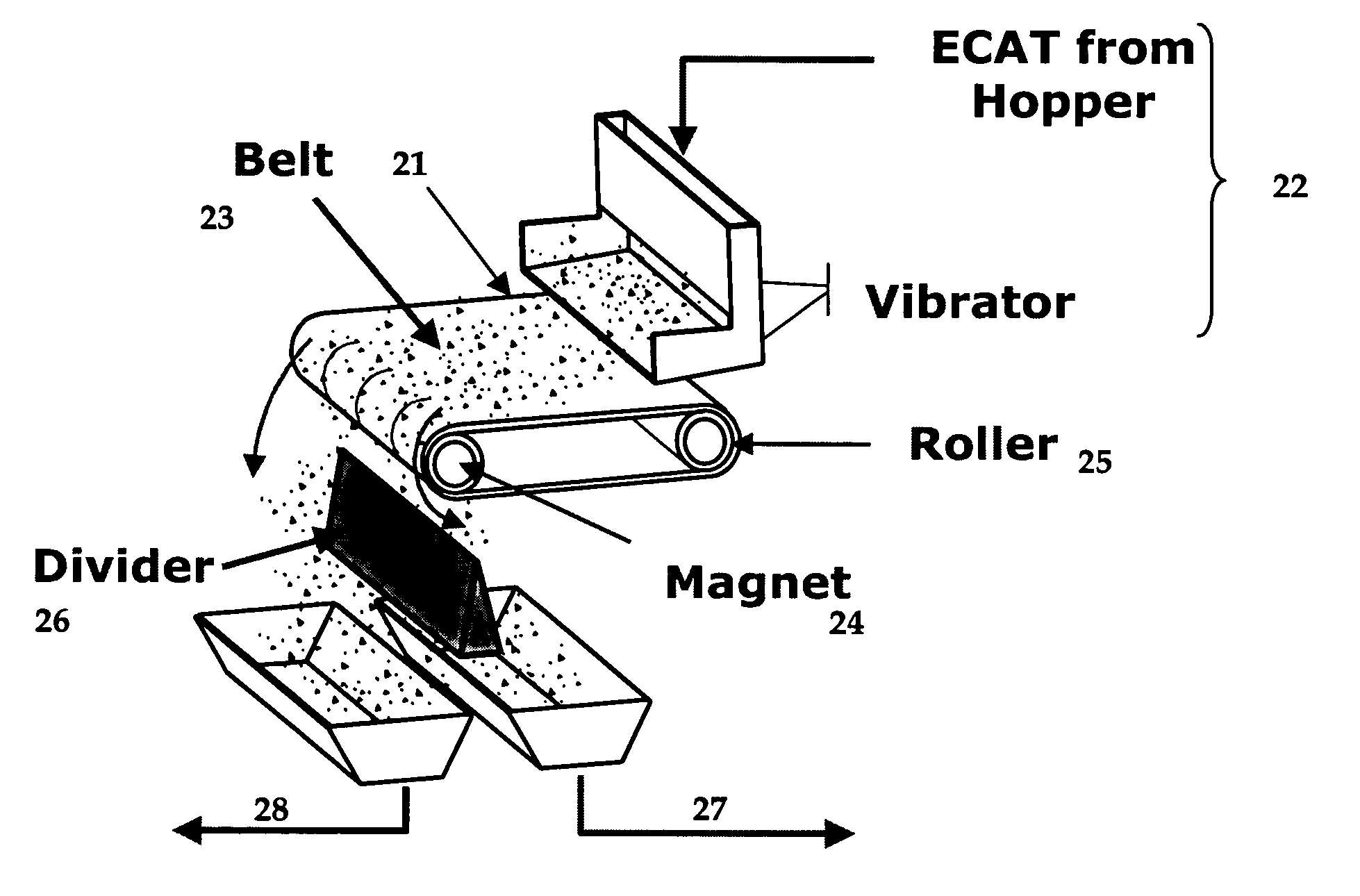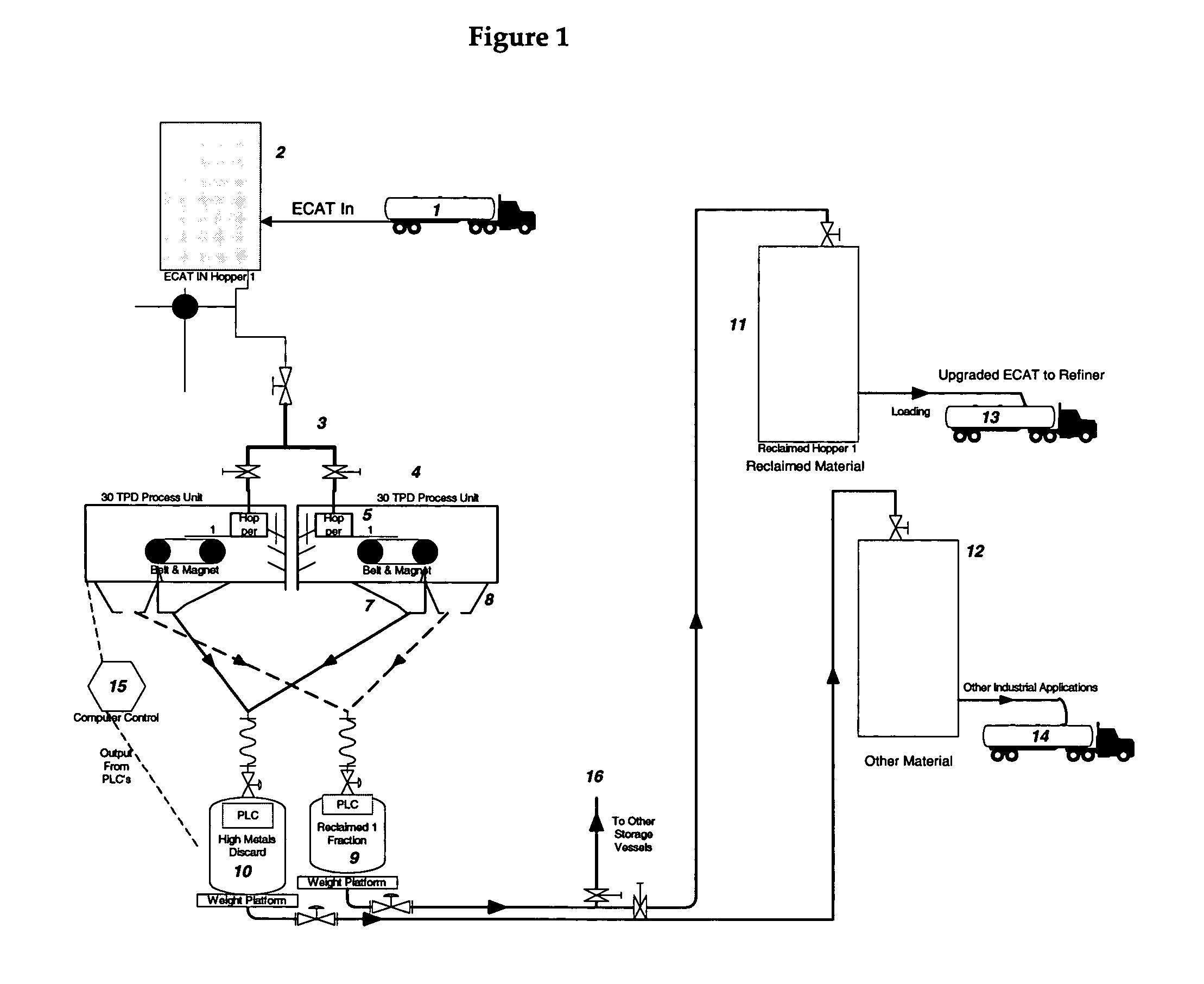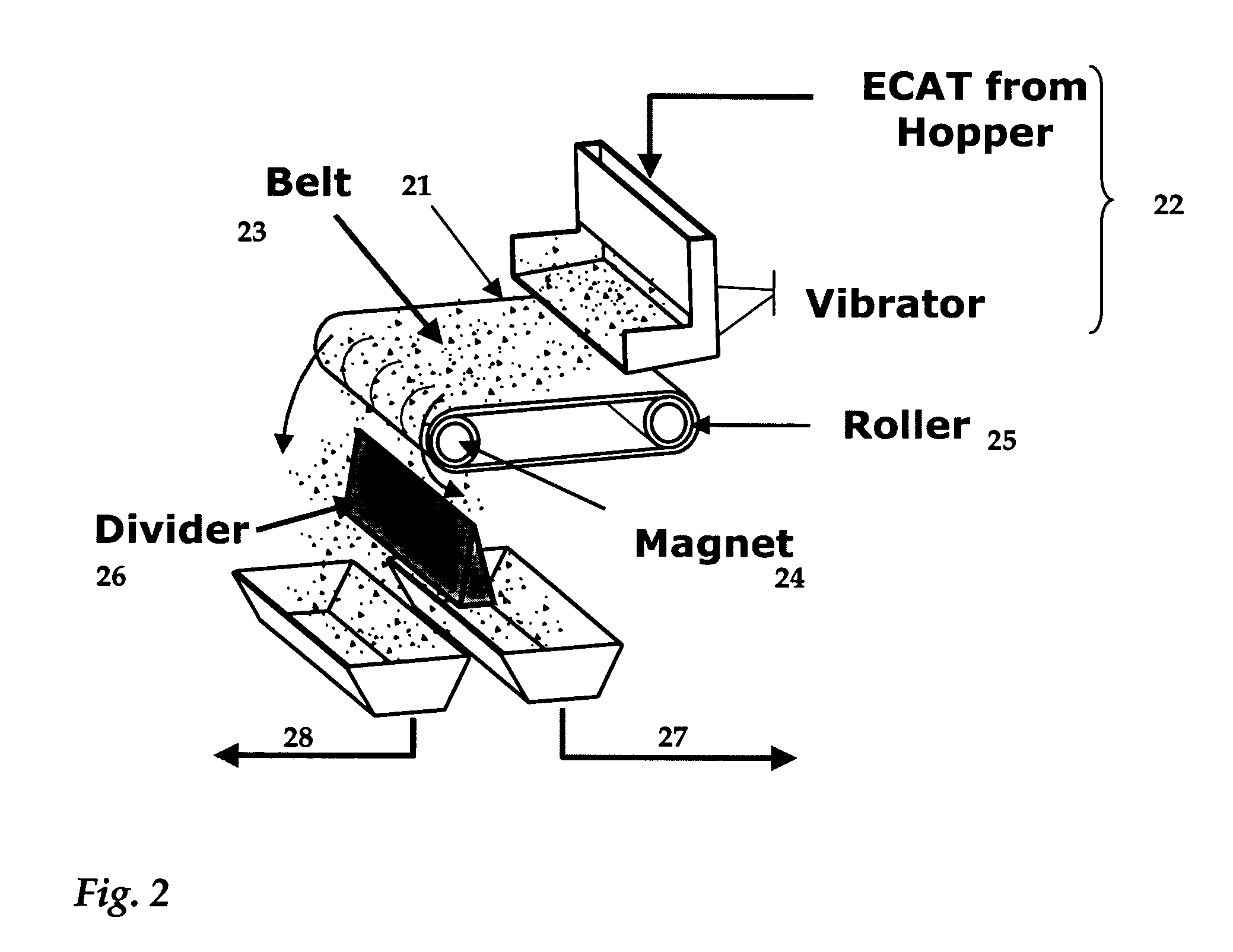Discarded FCC equilibrium catalyst through reclamation
a technology of equilibrium catalyst and fcc, which is applied in the direction of separation process, filtration separation, treatment water, etc., can solve the problems of reducing the efficiency of catalyst, accumulating more metal contaminants, and older catalyst particles being unable to convert petroleum oil effectively into consumer products, etc., to achieve the effect of improving environmental impact and improving the safety of the reclamation process
- Summary
- Abstract
- Description
- Claims
- Application Information
AI Technical Summary
Benefits of technology
Problems solved by technology
Method used
Image
Examples
example 1
[0045] A simulated sample of discarded FCC equilibrium catalyst having high vanadium content and low nickel content was prepared. The simulated catalyst was processed according to the process described herein at the following parameters: belt speed 325 ft / min, magnet strength of 15,000 gauss, 115 degree divider / splitter setting, 5 mil belt thickness, and six-inch diameter magnets. The process was performed at ambient environmental conditions. As shown below, 80% of undesired equilibrium FCC catalyst fraction and 20% of the desired reclaimed FCC equilibrium catalyst was collected. The following results were obtained:
NickelIronVanadiumMaterial(ppm)(ppm)(ppm)Activity, Conv. Wt. %FCC ECAT6763722331162.00Desired 20%3853096172972.00Undesired 80%7493879370759.75
The 20% desired recovered FCC equilibrium catalyst contains 43% less nickel content, 48% less vanadium content, 17% less iron content, and a 16% higher activity than the starting FCC equilibrium catalyst. These data confirm that ...
example 2
[0046] A simulated sample of discarded FCC equilibrium catalyst having high vanadium content and low nickel content was prepared. The simulated catalyst was processed according to the process described herein at the following parameters: belt speed 325 ft / min, magnet strength of 15,000 gauss, 115 degree divider / splitter setting, 5 mil belt thickness, and six-inch diameter magnets. The process was performed at ambient environmental conditions. As shown below, 70% of undesired equilibrium FCC catalyst fraction and 30% of the desired reclaimed FCC equilibrium catalyst was collected. The following results were obtained:
NickelIronVanadiumMaterial(ppm)(ppm)(ppm)Activity, Conv. Wt. %FCC ECAT6763722331162.00Desired 30%4863288234068.00Undesired 70%7573908372759.71
[0047] The 30% desired recovered FCC equilibrium catalyst contains 28% less nickel content, 29% less vanadium content, 12% less iron content, and a 10% higher activity than the starting FCC equilibrium catalyst. These data confirm...
PUM
| Property | Measurement | Unit |
|---|---|---|
| Length | aaaaa | aaaaa |
| Length | aaaaa | aaaaa |
| Fraction | aaaaa | aaaaa |
Abstract
Description
Claims
Application Information
 Login to View More
Login to View More - R&D
- Intellectual Property
- Life Sciences
- Materials
- Tech Scout
- Unparalleled Data Quality
- Higher Quality Content
- 60% Fewer Hallucinations
Browse by: Latest US Patents, China's latest patents, Technical Efficacy Thesaurus, Application Domain, Technology Topic, Popular Technical Reports.
© 2025 PatSnap. All rights reserved.Legal|Privacy policy|Modern Slavery Act Transparency Statement|Sitemap|About US| Contact US: help@patsnap.com



